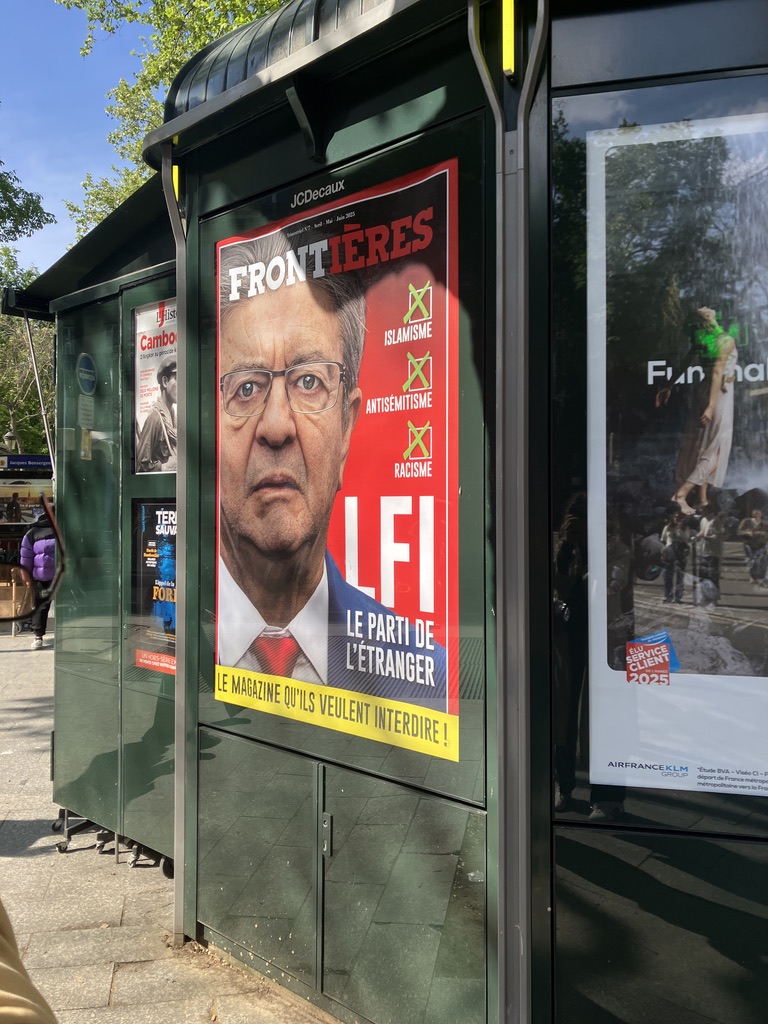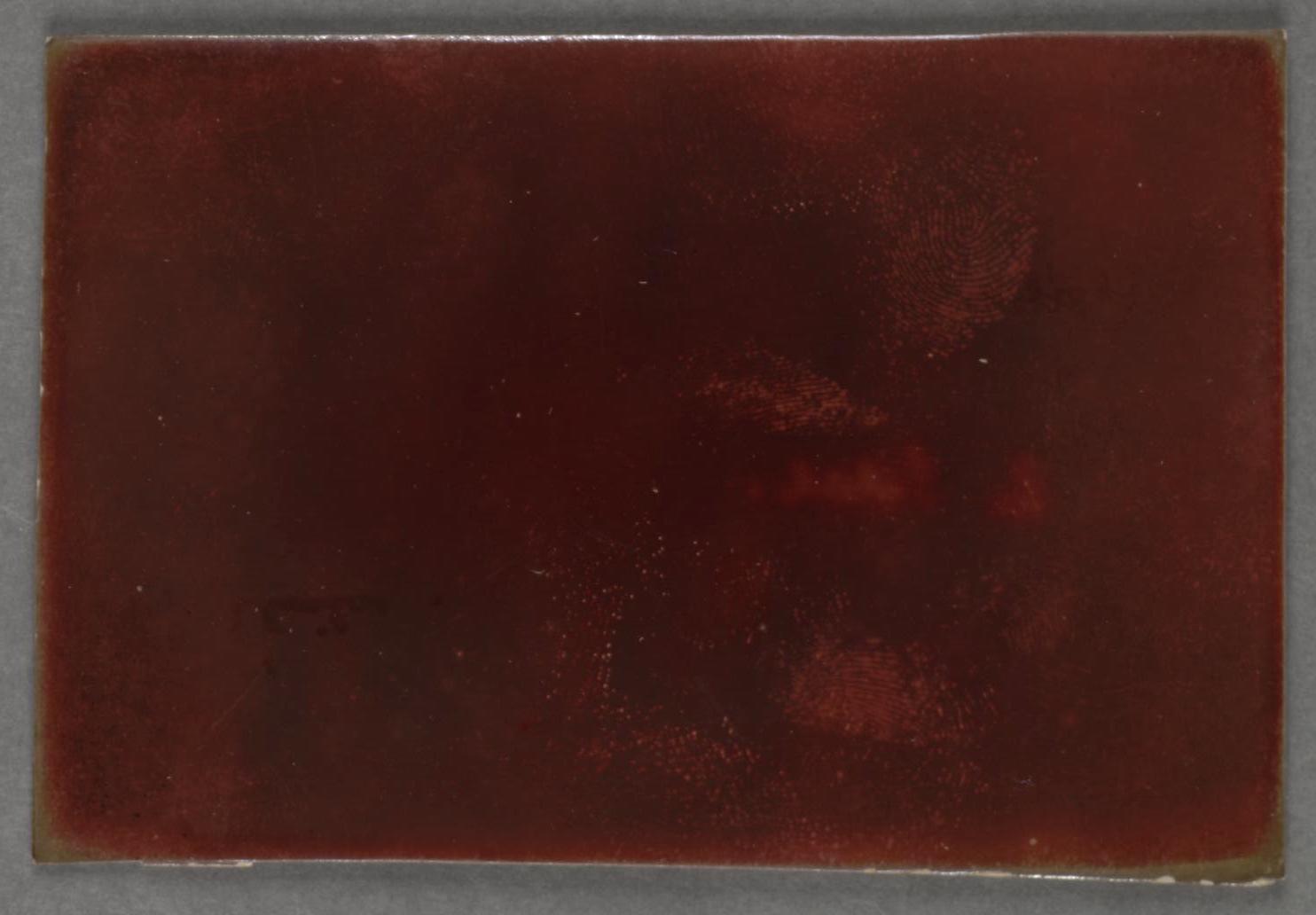|
|
|
|
|
|
French Dispatch
Last month, I spent several weeks in France, temporarily enjoying the ability to trade one place’s problems for another’s (at least in France the trains run on time).
|
One afternoon in Paris, I passed a newsstand by the Canal St. Martin, where I encountered a large poster of Jean-Luc Mélenchon, the leader of the leftwing movement Le France Insoumise (LFI), staring back at me.
|
|
Next to his face, there were three checkmarks: “Islamism,” “Antisemitism,” and “Racism.” “LFI: the party of the foreigner,” read a caption below.
|
|

|
|
|
The poster was advertising an issue of Frontières, a magazine of the extreme far right (”the magazine they want to ban,” according to its own self-pronouncement). The variety of these insinuations against Mélenchon says something about how strange party discourse has become in France over the last few years, and how antisemitism is increasingly instrumentalized by the right as a cudgel to attack the left and to flame anti-Muslim, anti-migrant sentiments.
|
Last month, the Diasporist ran a suite of pieces responding to an antisemitism scandal in France involving LFI and Cyril Hanouna, the far-right tv host known for his homophobic rhetoric and anti-migrant demagoguery. In March, LFI published an image of Hanouna, who is of Tunisian Jewish descent, on a poster calling for an anti-fascist demonstration. The image (which was generated using Grok, Elon Musk’s AI software) was found by many to be antisemitic and led to a public retraction by LFI.
|
In "About a Poster," Tsedek!, a decolonial Jewish collective, offers one strategy for confronting instances of antisemitism, real and alleged, without ceding ground to the far right. In "Reclaiming Resistance," by writer and activist Olga Rozenblum, and “Through a Mirror, Darkly” from writers and researchers Marianne Dautrey and Aurélia Kalisky, the authors grapple with the context of the Hanouna affair while expanding upon and challenging Tsedek!’s analysis. This week, we’re featuring these three texts again in the hope that they might serve as resources in countering the far right’s tactics and as helpful means of debate.
|
As always, we invite readers to continue the conversation. If you like our work, please also consider donating. Your contributions help us bring you stories like these from around the world.
|
|
Editor-in-Chief, the Diasporist
|
|
|
|
|
|
Tsedek!
|
|

|
|
|
"The antisemitic productions of the 1930s and 1940s supported policies of persecution against Jews, who were seen as foreign to the white race and enemies from within. In reality, this parallel contributes to a particularly detestable relativization of Nazism. Because — and this is so obvious that we shouldn’t have to provide a reminder — the desired material outcome represented by the Eternal Jew poster was not an anti-fascist march, but the extermination of the Jews of Europe. Antisemitism is never simply a matter of pencil strokes, but is first and foremost the result of concrete policies and discourses, as well as the effects of these discourses on the social body."
|
|
|
|
|
|
Olga Rozenblum
|
|
"The Hanouna visual is an opportunity to rethink the necessary work of questioning our own tools of resistance, in the face of the pitfalls sown by fascism. When LFI — or anyone — relies on the algorithm of a fascist-racist world, Hanouna will always come out more Jewish than fascist: his Jewishness (or any other racialization) will cover his fascism."
|
|
|
|
|
|
|
|
Marianne Dautrey and Aurélia Kalisky
|
|
"In a reality that seems to have become a permanent caricature, we don’t really care whether Mélenchon’s ambiguous phrases or his way of reducing Judaism to a retrograde religion are calculated, or simply the result of unconscious stupidity: these slips allow the detractors of the left to send the leader of the so-called “extreme” left back-to-back with those of the extreme right, whose antisemitic and Islamophobic intentions are clear. This is all the more the case given that, while the photo of Hanouna reworked by AI may not be antisemitic in intent — as evidenced by the fact that LFI had planned other visuals based on the same model, depicting, for example, Pascal Praud, another far-right radio and TV host who is just as virulent as Hanouna, but not Jewish — the process of delivering the faces of celebrities to public vindictiveness is indeed the language of fascism."
|
|
|
|
|
|
|
|
Donate to support our work.
|
|
|
|
|
|
Follow us on social media to stay on top
of what we’re planning.
|
|
|
|
|
|
|
|
|
|
|
|